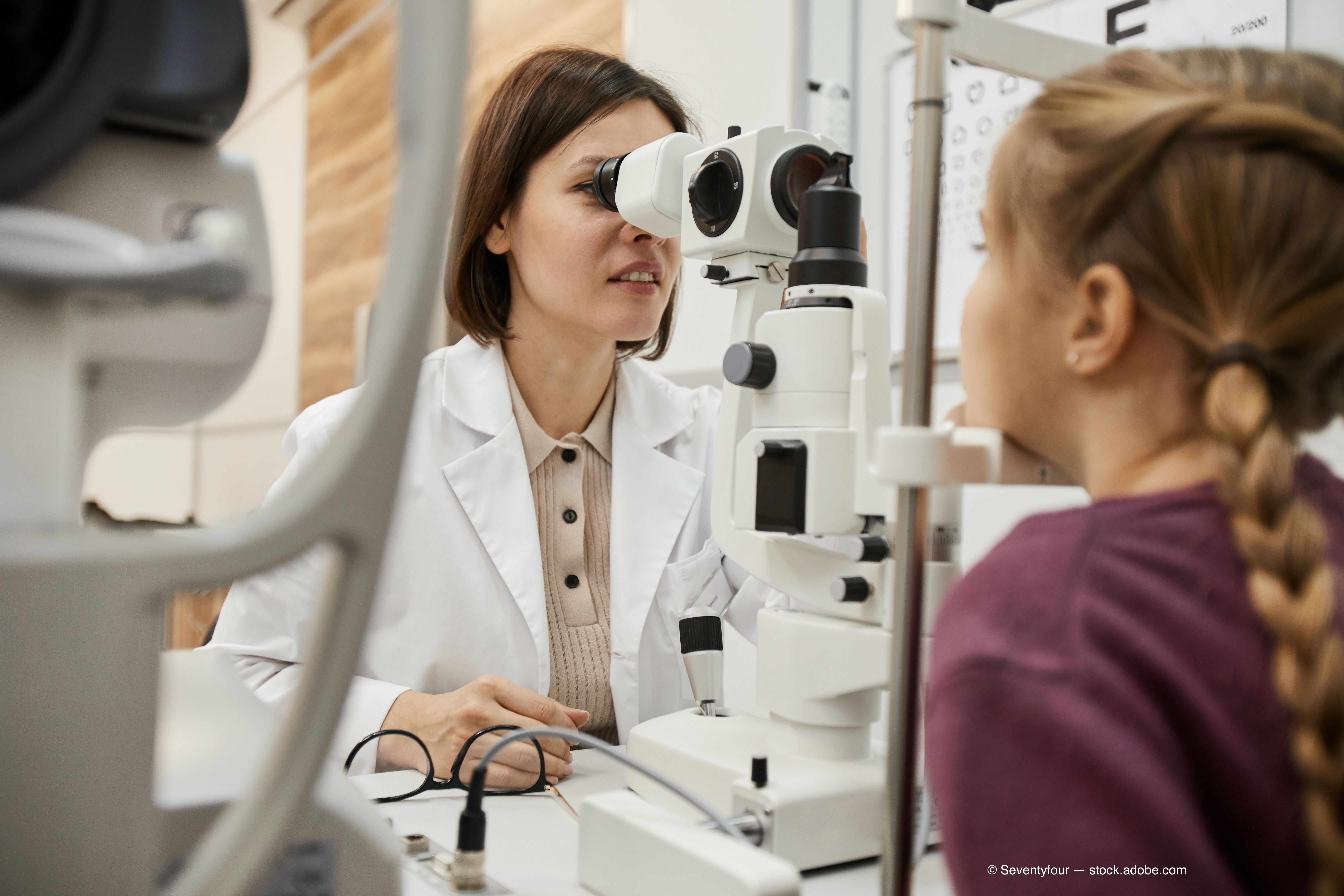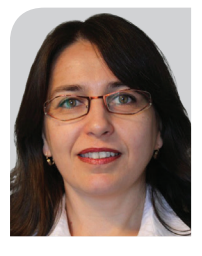Article
Looking to the future of pediatric ophthalmology
Author(s):
New paradigm-changing treatments for young patients on the horizon.

Dr. Dumitrescu

This article was reviewed by Alina V. Dumitrescu, MD
The most common disorders in pediatric ophthalmology are amblyopia, strabismus, refractive errors, and inherited eye diseases, according to Alina V. Dumitrescu, MD, who looks forward to new treatments in the coming decade.
Dumitrescu is a clinical assistant professor of pediatric ophthalmology at the University of Iowa in Iowa City, Iowa.
Amblyopia
The current mainstays of therapy are glasses and occlusion of the eye with the better vision. Treatment responses vary based on a number of factors including age; initial visual acuity (VA); cause, duration, and severity of the amblyopia; patient compliance; and speed of tapering of treatment and concomitant conditions.
One new emerging treatment is liquid crystal glasses (OphthoCare Ltd, Bat Shlomo, Israel), which provide electronically controlled intermittent occlusion of the dominant eye by fast flickering between on-and-off occlusion, Dumitrescu said.
Related: Technology 'perfect' for neuro-ophthalmology diagnoses
The preliminary data obtained from use of the device show very good compliance and improved VA and stereopsis.
Another new treatment, perceptual learning (Vision Therapy Solutions), is based on repetitive practice of software-based, patient-specific visual tasks with the nonamblyopic eye covered. Improvements in visual performance have been obtained by inducing plasticity in the visual cortex.
The initial studies have shown a 2-fold improvement in contrast sensitivity and letter recognition even in patients as old as 55.
An interesting treatment that does not use occlusion is dichoptic training, in which stimuli are presented separately to each eye and the lower contrast stimuli are presented to the fixing eye to counteract suppression and facilitate binocular combination.
Dumitrescu said if the subjects can successfully complete the task, the contrast in the dominant eye is increased slowly until the contrast levels in both eyes are equal. Initial data from studies are promising, she noted, and show reduced suppression and improved stereoacuity.
This led to creation of the binocular treatment system I-BiT (funded by an i4i award from National Institute for Health Research in 2017), which uses video clips and interactive games.
Related: Astigmatism management software proving to be accurate, precise
Pediatric, adult strabismus
Surgery is the main therapy for strabismus. There is active research examining the use of eye tracking and artificial intelligence for strabismus and motility measurements.
Two nonsurgical treatments for strabismus are the latest measures to emerge. The first is injection of bupivacaine and botulinum A toxin into the extraocular muscles.
The second has been used to augment surgery for infantile esotropia and partially accommodative esotropia and as a temporary measure in paralytic strabismus to prevent secondary muscle contracture.
Bupivacaine corrects strabismus by increasing a muscle’s strength. The efficacy of this approach has been reported in small studies in patients with horizontal comitant strabismus and, importantly, the treatment was stable over time, Dumitrescu pointed out.
Related: Making the most of imaging in examinatation of pediatric patients
“This can be a low-cost alternative to conventional surgery; however, despite that the success rates are inferior to conventional surgery, this pharmacologic approach appears promising,” she said.
A systemic treatment, teprotumumab (Tepezza, Horizon Therapeutics), a human monoclonal antibody inhibitor of insulinlike growth factor 1 receptor, for adults with active thyroid eye disease, improved diplopia in these patients.
Refractive errors
Hyperopia is more common in all age groups, and myopia is not common in young patients. In patients over 15, myopia increases in prevalence, in children in junior high school and especially in Asia, but hyperopia still remains more prevalent overall.
“A challenge of the next decade will be myopia progression control via 4 promising approaches,” Dumitrescu said. These are use of diluted atropine drops, orthokeratology, more time spent outdoors, and minimization of peripheral hyperopic defocus using bifocal and progressive lenses.
Related: Are posterior corneal curvature changes culprit in hyperopic shifts?
Pediatric inherited eye disorders
“Potentially game-changing treatments are emerging for pediatric inherited eye disorders,” Dumitrescu noted.
These disorders can be strictly ocular or systemic disorders that have ocular involvement. They can affect any part of the eye and are occur infrequently, although when all ages and diseases are considered, 30 million people in the US alone are affected by a “rare disease.”
Thus far, gene therapy is the most promising approach and only FDA-approved treatment, Dumitrescu explained.
Other potential therapies include oral N-acetylcysteine to improve cone function in retinitis pigmentosa (RP), which currently is in a phase 1 trial.
It caused VA improvements and maintenance of the ellipsoid zone in patients with moderately advance RP. The drug was well tolerated and will be moving into the next trial phase.
Related: Intravitreally injected hRPCs improve vision in retinitis pigmentosa cases
Antisense oligonucleotides are used to downregulate a molecular target. Intravitreal injections can redirect normal splicing of aberrantly processed pre-messenger RNA in the photoreceptors.
This treatment is being tested to treat Leber congenital amaurosis resulting from mutations in the ciliopathy gene centrosomal protein 290, and Dumitrescu said the results seem promising.
Enzyme replacement therapy has been used in 2 trials, one for CLN2-associated Batten disease and one for mucopolysaccharidosis I, II, VI, and IVA, and the trials have reported optimistic results. The studies used intraventricular and intravenous routes of administration, and the drugs did not penetrate the eye, but these are promising for future combined therapies.
“All of these strategies bring hope for the future of pediatric ophthalmology and create the basis for better and more efficient treatment,” Dumitrescu concluded.
Read more by Lynda Charters
--
lina V. Dumitrescu, MD
e:alina-dumitrescu@uiowa.edu
Dumitrescu has no financial interest in this subject matter.
Newsletter
Don’t miss out—get Ophthalmology Times updates on the latest clinical advancements and expert interviews, straight to your inbox.




